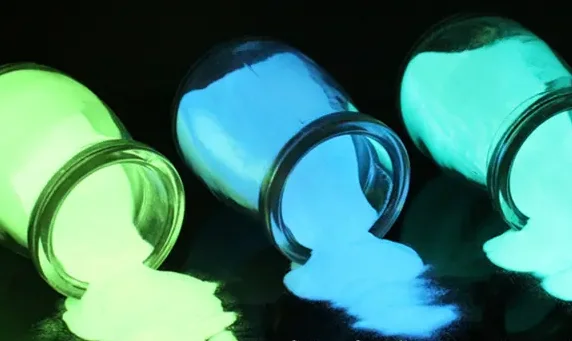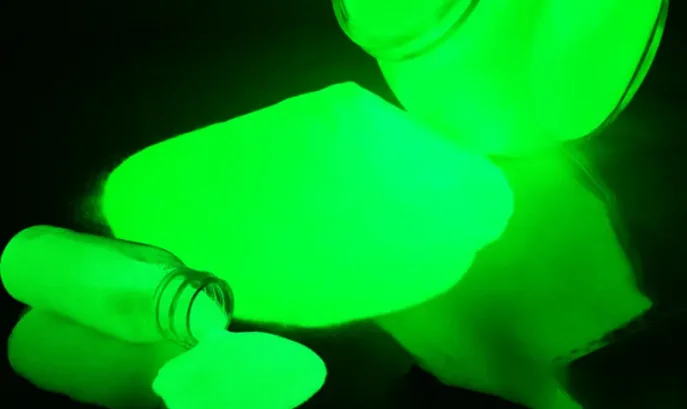Glow in the dark pigment is becoming popular due to its long-lasting glow, high brightness, eco-friendliness, and energy-saving features. These traits make it ideal for many purposes. However, it is challenging to select the right product as more manufacturers enter the market. So, what should you consider when choosing a glow in the dark pigment product?
1. The luminous duration of glow in the dark pigmen
The duration of luminous powder varies depending on the maker. Regular short-term powder may require recharging to emit light after exceeding its glowing time. On the other hand, long-lasting glow in the dark pigment can provide light for more than 12 hours. This type of powder is naturally expensive compared to the regular short-term kind. To cut production costs and achieve desired outcomes, we should choose powders with various luminous durations that suit different environments.

2. The brightness of glow in the dark pigment
The structure of the glow in the dark pigment affects its ability to absorb different types of light. When exposed to ordinary light, sunlight, and purple light for a few minutes each, the powder appears bright under ordinary light and particularly bright under sunlight. Its greatest luminosity is under violet light, indicating the powder’s highest capability to absorb violet light. Similarly, when we compare the brightness of various glow in the dark pigments from different brands under the same light source, we can see that it varies based on the manufacturer’s production process and the raw materials used. Typically, higher brightness indicates higher quality but it also comes at a higher cost.

3. The eco-friendliness of glow in the dark pigment
A trustworthy manufacturer of glow in the dark pigment will tell consumers that they also need to pay attention to the environmental friendliness of the product when choosing it. There is an increased awareness about environmental issues and consumers are looking for eco-friendly options. Products that are made with materials that don’t meet national standards may be considered substandard and could be harmful to human health. Industries that use glow in the dark pigment raw materials, such as cosmetics and clothing, should prioritize environmental protection to ensure the safety of their products. In the past, some manufacturers used radioactive substances in the production of glow in the dark pigment powder. Prolonged exposure to these substances could pose a health risk to humans.
When selecting glow in the dark pigment, it’s important to not only consider its luminous duration, brightness, and environmental friendliness, but also its functions. For example, ordinary glow in the dark pigment is not suitable for use in water-based glow in the dark pigment inks and paints because it undergoes a hydrolysis reaction when it comes into contact with water. To address this issue, some glow in the dark pigment manufacturers have developed specialized waterproof glow in the dark pigment that has been treated with a waterproof coating.
This type of powder is perfect for scenarios where water resistance is required. is becoming popular due to its long-lasting glow, high brightness, eco-friendliness, and energy-saving features. These traits make it ideal for many purposes. However, it is challenging to select the right product as more manufacturers enter the market. So, what should you consider when choosing a glow in the dark pigment product?
Continue Reading
Glow in the dark powder vs Fluorescent powder, What is the difference?
How to select glow in the dark pigment powder for your product?



